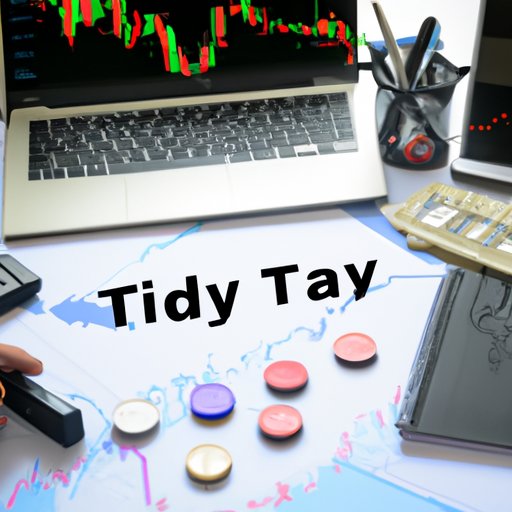Introduction
Day trading crypto is becoming increasingly popular as cryptocurrency markets continue to grow. In this guide, we’ll explain what day trading crypto is, the benefits and risks associated with it, and how to set up a trading account. We’ll also discuss different trading strategies, risk management techniques, and technical analysis tools that can be used to maximize profits.

Definition of Day Trading Crypto
Day trading crypto is when traders buy and sell digital assets in order to take advantage of short-term price fluctuations. The goal is to make a profit by buying low and selling high within a single day. Day traders typically do not hold their positions overnight, so they need to be able to accurately predict market movements in order to be successful.

Overview of the Benefits and Risks
Day trading crypto can be an exciting and rewarding activity for those who are willing to take on the risks. It offers the potential for large profits if done correctly, but it also carries the risk of significant losses. Before getting started, it’s important to understand the risks involved and develop a solid trading plan.

Setting Up a Crypto Trading Account
The first step in day trading crypto is to set up a trading account. This involves choosing a crypto exchange and creating an account. Most exchanges require users to provide some personal information and proof of identity before they can start trading. Once the account is created, users will need to add funds in order to begin trading.
Different Trading Strategies
Day trading crypto requires a sound strategy in order to be successful. There are several different strategies that can be used, such as market orders, limit orders, stop loss/stop limit orders, and short selling. Each strategy has its own advantages and disadvantages, so it’s important to research each one carefully before deciding which one to use.
Risk Management
Risk management is an essential part of day trading crypto. Understanding volatility and calculating risk/reward ratios are key to managing risk effectively. It’s also important to utilize stop losses in order to minimize potential losses. By following these guidelines, traders can ensure that their trades are executed safely and with minimal risk.
Reading Charts and Using Technical Analysis Tools
Crypto traders must also learn to read charts and use technical analysis tools in order to identify trends and predict price movements. Different chart types can be used, such as line charts, bar charts, and candlestick charts. Common indicators, such as moving averages and Bollinger bands, can also be used to analyze the market. Support and resistance levels can also be identified and used to identify entry and exit points.
Tips for Entering and Exiting Trades
Timing the market is crucial for day trading crypto. Traders should make decisions based on fundamentals and set reasonable profit targets. Knowing when to cut losses is also important, as it can help minimize potential losses. By following these tips, traders can increase their chances of success.
Conclusion
Day trading crypto can be a lucrative activity for those who are willing to take on the risks. By understanding the basics, setting up a trading account, utilizing different strategies, managing risk, reading charts, and using technical analysis tools, traders can increase their chances of success. With patience and practice, anyone can become a successful day trader.
(Note: Is this article not meeting your expectations? Do you have knowledge or insights to share? Unlock new opportunities and expand your reach by joining our authors team. Click Registration to join us and share your expertise with our readers.)
